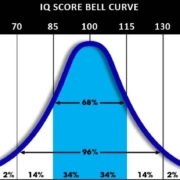According to the June 2016 release of the U.S. Department of Education’s most recent evaluation of state performance, twenty-seven states and the District of Columbia failed to meet the requirements of the Individuals with Disabilities Education Act. This is the third year that the Education Department has focused on the actual academic outcomes of students with disabilities in the various states between the ages of 3-21. Data was based on the 2014-15 school year.
The DOE measured the percentage of students with disabilities participating in state tests and in the National Assessment of Educational Progress (NAEP); the percentage of that population scoring at or above “basic” on the NAEP; the percentage of that population who dropped out; and the percentage of those who graduated with a regular high school diploma.
Twenty-three states were deemed to “meet requirements,” an increase of four states from last year. The remaining states were deemed to “need assistance” or “need intervention.” No states were in the lowest category, “needs substantial intervention.”
Part B and Part C of the Individuals with Disabilities Education Act seek to measure state compliance with IDEA requirements. Starting in 2015, the State Performance Plan (SPP) of Part B (serving students with disabilities between 3-21) and the Annual Performance Report (APR) of Part C (serving infants and toddlers from birth through age 2) include a State Systemic Improvement Plan which pushes the States to improve “outcomes“and progress toward meeting measurable and rigorous targets established in its SPP, not just mere compliance with the law. The Education Secretary is required to determine each State’s progress in meeting the requirements.
If a State “Needs Assistance” for two consecutive years, the Department must take one or more enforcement actions. New Jersey was in the category of “Meets Requirements” for IDEA Part B and “Needs Assistance” for one year for Part C. New York was in the category of “Needs Assistance” for two or more consecutive years for both Part B and Part C, which means that they will be subject to enforcement action. These “enforcement actions” may include requiring New York to access technical assistance, being designated a high-risk grantee, or directing New York to use set-aside funds for areas where assistance is needed.
Secondary Transition:
In New York, only 78% of students aged 16 and older with IEPs actually had an IEP which complied with the IDEA’s Secondary Transition requirements. To comply, the IEP has to include appropriate measurable post secondary goals that are annually updated and based upon an age appropriate transition assessment, transition services, including courses of study, that will reasonably enable the student to meet those post secondary goals, and annual IEP goals related to the student’s transition service needs. There also must be evidence that the student was invited to the IEP Team meeting where transition services are to be discussed and evidence that, if appropriate, a representative of any participating agency was invited to the IEP Team meeting with the prior consent of the parent or student who has reached the age of majority.
New Jersey performed even worse; the state only reached a level of compliance of 76%. This should be contrasted with Massachusetts and Louisiana, which were deemed to have been 100% in conformity. Texas and Alabama were just shy of 100%. Pennsylvania was 81% and California, and Mississippi were over 99%. Michigan was 77% and Idaho was 67%.
There is a lot of data in these assessments. Stay tuned for additional interesting tidbits.
If you think your school is failing your child, feel free to contact me.







